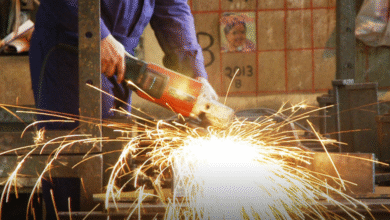Understanding the Modern Carretera

The word carretera, widely used in Spanish-speaking countries, refers to a road or highway—one of the most important infrastructural elements of any nation. Roads are essential arteries that connect people, enable commerce, and facilitate emergency response. But what does it really take to create a functional and lasting carretera? The answer is a fascinating mix of engineering, materials science, planning, and environmental consideration.
This article explores the evolution, construction, purpose, and sustainability of the modern carretera, with a focus on how roads shape and serve our societies today.
A Brief History of the Carretera
Carreteras have existed in some form since ancient civilizations. The Romans, for instance, were pioneers in building long-lasting roads across Europe. These early roadways were made with crushed stone, gravel, and paving stones, laid in carefully engineered layers. The design principles they followed—such as using a crowned surface for drainage—are still relevant today.
With the advent of the industrial revolution and the explosion of motorized transport in the 20th century, the modern carretera underwent rapid transformation. Roads became wider, smoother, and more durable, allowing for higher speed and greater traffic volumes.
See also: Technology in Commercial Cleaning: Innovations Shaping the Industry
Types of Carreteras
Not all roads are built equally. Depending on their function and location, there are different categories of carretera:
1. Urban Roads
These are found within cities and towns and include avenues, boulevards, and residential streets. They often accommodate pedestrians, cyclists, and public transport systems.
2. Rural Roads
Built in the countryside, rural carreteras connect smaller towns and agricultural zones. They may be unpaved or paved depending on regional development.
Carretera Construction: A Layered Approach
Constructing a carretera involves a meticulous, layered process.
1. Surveying and Design
Before construction, engineers conduct soil surveys, traffic analyses, and environmental assessments. This helps determine the best route and materials.
2. Subgrade Preparation
The subgrade is the base soil. It is compacted and sometimes stabilized with cement or lime to enhance strength and prevent settling.
3. Base and Subbase Layers
Crushed rock, gravel, or recycled materials are added in layers to distribute loads from traffic and to enhance drainage.
4. Pavement Layer
This is the visible surface. It can be made from asphalt (bitumen and aggregates) or concrete, depending on local conditions, cost, and traffic volume.
Materials Used in Carretera Building
The choice of materials plays a critical role in the durability and performance of a carretera.
Asphalt
Asphalt is flexible, quick to lay down, and cost-effective. It is widely used for its smooth surface and relatively easy repair process.
Concrete
Concrete roads are more durable and last longer than asphalt but are costlier to build. They are common in areas with heavy vehicle loads or frequent temperature changes.
Geotextiles and Geogrids
Modern carretera may use synthetic fabrics for soil reinforcement.
Recycled Materials
To improve sustainability, many governments now mandate the use of recycled asphalt, rubber, or plastics in road construction.
Environmental Considerations
Today’s carretera construction isn’t just about traffic flow and strength—it’s about sustainability.
Drainage and Water Management
Poor drainage can lead to early road failure. Engineers design roadside ditches, culverts, and permeable shoulders to manage runoff efficiently.
Eco-Friendly Materials
Green construction methods favor renewable or recycled inputs and seek to reduce the carbon footprint of the building process.
Wildlife Crossings
In regions with large animal populations, special crossings are incorporated into highways to prevent roadkill and accidents.
Maintenance and Longevity
No carretera is maintenance-free.
Routine Maintenance
This includes patching potholes, repainting lane lines, clearing debris, and ensuring signs and signals are functional.
Structural Rehabilitation
If deeper damage is found, base layers might require strengthening or complete rebuilding.
The Economic Impact of Carreteras
Well-constructed and maintained carreteras drive economic growth. They allow for:
- Efficient goods transportation
- Tourism development
- Access to education and healthcare
- Faster emergency response
Road networks are often the backbone of national logistics, connecting farms to markets and factories to ports.
Smart Carreteras: The Future of Roadways
With the rise of digital technologies, carreteras are becoming “smarter.”
Intelligent Transport Systems (ITS)
Sensors embedded in roads can detect traffic conditions, accidents, and weather changes in real time, sending updates to traffic control centers.
Solar Roads
Some pilot projects are testing roads embedded with solar panels that generate energy while functioning as regular pavements.
Self-Healing Materials
Researchers are developing road materials that can repair micro-cracks on their own, reducing the need for frequent repairs.
Challenges in Road Development
Despite advances, several challenges continue to affect the construction and maintenance of carreteras:
- Funding shortages
- Rapid urbanization and traffic congestion
- Extreme weather events (flooding, heatwaves)
- Corruption or poor oversight in public works
Addressing these issues requires policy changes, technological adoption, and better resource allocation.
Conclusion
The carretera, a simple word for road, embodies a complex world of engineering, logistics, and public service.
Understanding what makes a carretera function well—from its foundational layers to the sustainability of its materials—helps us appreciate the value of quality infrastructure. As we move forward, the challenge is not only to build more roads but to build better, smarter, and more sustainable ones for generations to come.





